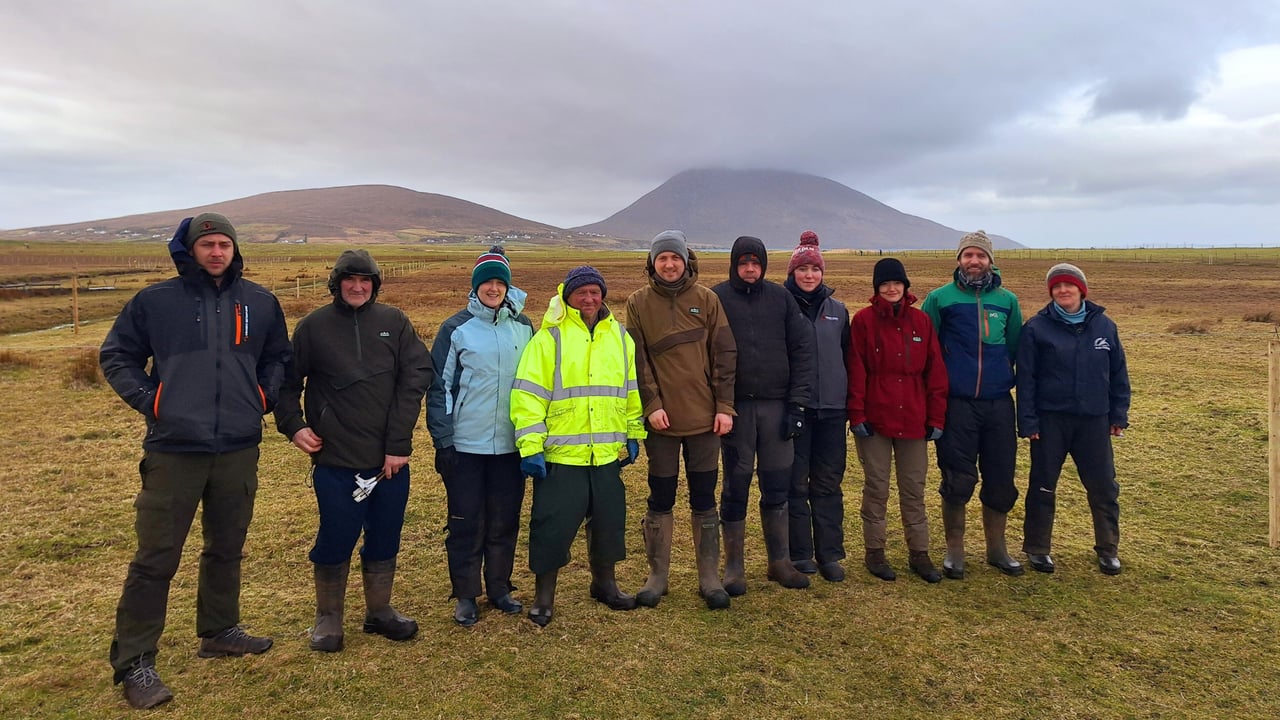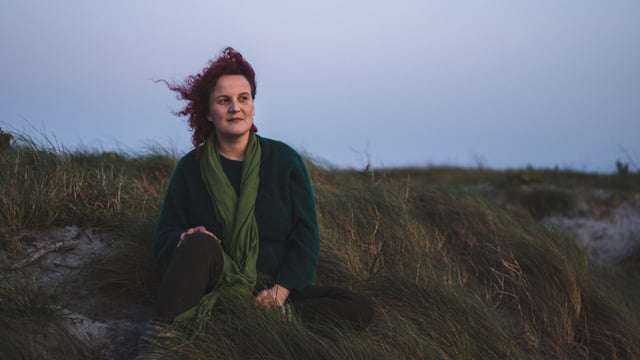Farmers join project to reverse wader population decline on Achill
Farmers are taking part in a community-led project which is reversing the decline in wader populations in The Valley on Achill, Co. Mayo, a critical site for breeding waders since 1985.
"Historical data shows a significant decline in wader populations, with numbers dropping from 27 pairs across six species in 1985 to just three pairs across two species in 2022," Jackie Hunt, ecologist for the LIFE on Machair project, said.
"Species such as Dunlin, Ringed Plover, Common Sandpiper, Redshank, and Lapwing have all been affected."
LIFE on Machair project is a six-year EU-funded project developed to work with farmers, local shareholders, and local communities to protect and restore Ireland's network of Machair systems and associated breeding wader and pollinator communities.
In 2023, the project initiated efforts to maintain and restore breeding wader populations.
A key strategy was the installation of a 2ha fence with support from local shareholders. The aim was to protect the birds from predators, land use changes, and disturbances. The first year saw modest success with one fledged Lapwing.
"With actions implemented from learnings in 2023, the project saw a remarkable increase to 15 fledged Lapwing from six pairs in 2024. The fence not only reduced the impact of predators but also prevented disturbances from human activity, providing a safe nesting environment," Hunt said.
"This success was further highlighted by the return of Dunlin, a species last recorded at the site in 1996. In 2024 a pair of Dunlin nested and fledged two young, a significant achievement given their declining population.
"The project also saw four pairs of Lapwing successfully nesting and fledging young on their first attempt, a critical factor for their survival and population growth," the ecologist said.
In collaboration with the Breeding Wader EIP, the LIFE on Machair project has expanded its efforts with a larger fence, covering 1.6km. It encompasses areas where Lapwing previously attempted to nest unsuccessfully.
With the support of local communities, the larger fence has been installed to provide a safe breeding environment for all Lapwing at the site.
The success of the 2024 breeding season, with 15 fledged Lapwing, sets a hopeful precedent for the future, according to Hunt.
"The project aims to see these fledged birds return to breed, further increasing the population. Protecting and growing these core populations will allow for the potential expansion of breeding waders to other areas," she said.
"The LIFE on Machair project's efforts demonstrate the power of local collaboration and targeted conservation strategies in reversing the decline of breeding waders."
Hunt credits the commonage shareholders for the success of the project. She has been working with the local shareholders over the past number of years and has built up strong relations.
These shareholders were involved in the construction of both the first fence and the second, larger fence, constructed with support from the Breeding Waders EIP. It is funding the materials, and the Breeding Waders EIP team was also on-site last week to assist with the construction of the fence.
Local shareholder Dominick Vesey is happy with the works taking place.
"There was a very good teamwork in constructing the larger fence. It’s good for the area and it’s nice to see the birds coming back, Lapwing have come back and so has the Dunlin, it’s nice to see them back," he said.
"I’d like to thank all the people who were involved to date, Jackie Hunt, Dr. Mícheál Ó Briain, local ornathologist, and Dr. Catherine Farrell, who started this off back in May 2022.”
Paul Fitzgerald, a long-time resident of the valley on Achill Island and a cattle farmer, shared his thoughts on the ongoing conservation efforts.
"I think it's great work that's being done with the project. It's wonderful to see the birds coming back, especially the Dunlin," Fitzgerald said.
"The project is helping to restore the land to what it was like in my grandparents' time, when everyone had cows grazing here during the summer months."
Fitzgerald is also complimentary of the LIFE on Machair project, as he said they are helpful, unintrusive and listen to concerns.
"Jackie and the team have been great. We all hope to see the land and bird populations return to what they were 50-60 years ago, and we're willing to help make that happen," he added.
"I’d like to see the land restored and the erosion reduced. It's amazing to hear the birds calling again, like the Curlew recently. It's a positive change for the valley."
The Dúlra project has been contracted to carry out the fencing works. As this is a Special Protection Area, the use of machinery must be kept to a minimum.
Nathan Staunton of Dúlra commended the conservation works: "I think the work being done here is very effective. We've seen success in the first section of fencing, and this new fence is even stronger and more secure.
"The fence is already proving to be very sturdy. Maintaining it will be crucial, and we're committed to regular checks to ensure everything is in order."
"Working with the LIFE on Machair project and the Breeding Wader EIP has been a great experience. Everyone is very professional and helpful, always ready to provide the materials and support needed.
"It's tough work, especially without machinery, but it's rewarding to see the positive impact on the land and bird populations. We're used to doing things by hand, and it's gratifying to contribute to such an important conservation effort," he added.
The Breeding Waders EIP and LIFE on Machair project have shared objectives, as pointed out by Donal Beagan, nest protection and headstarting manager for the Breeding Wader EIP.
“It was a wonderful couple of days collaborating with LIFE on Machair, locals on Achill, and Dúlra in putting up a temporary nest protection fence at an important breeding wader site," he said.
"Hopefully, this work will help further increase fledging success at this site for 2025. Massive thanks to all the Breeding Wader EIP team and everyone involved for their hard work in tough conditions.”







